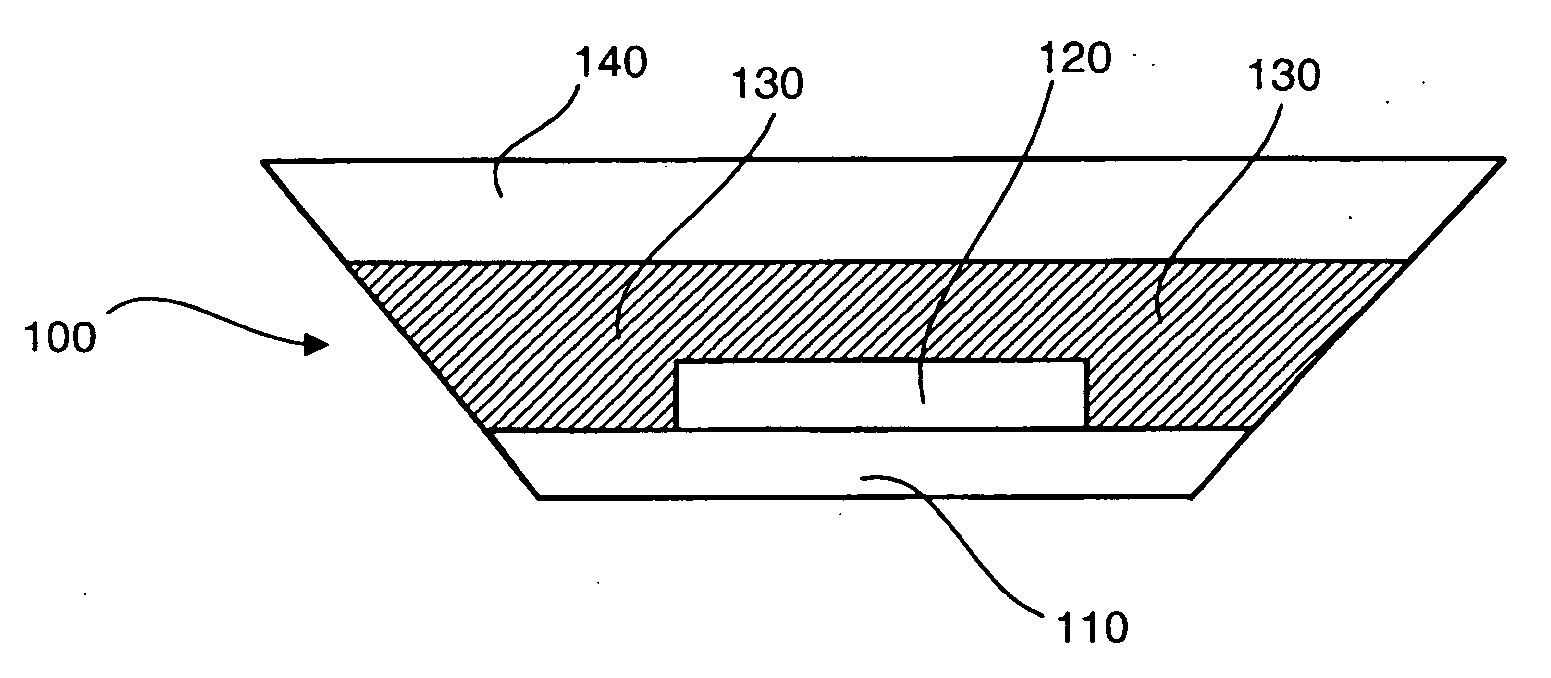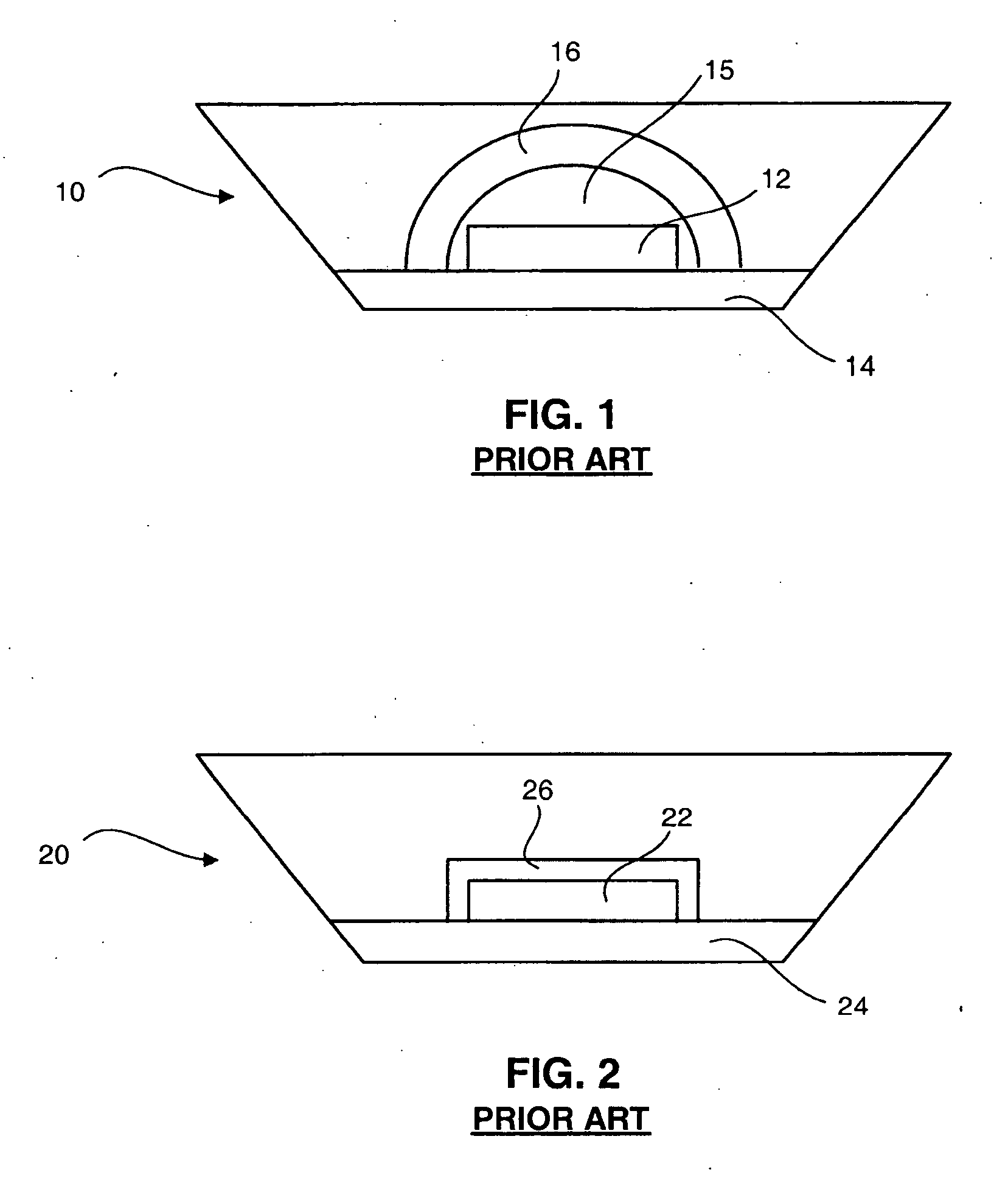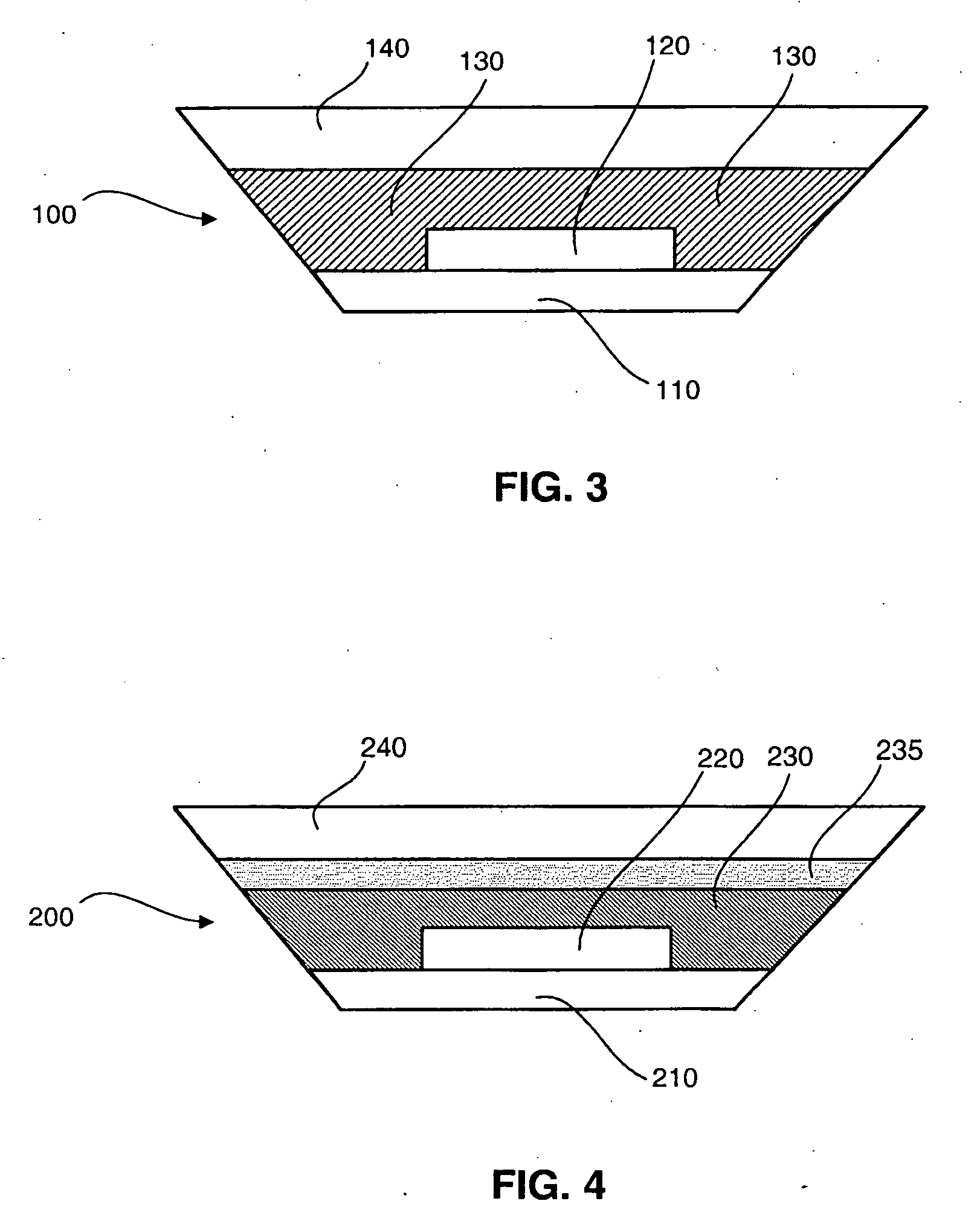Light emitting device with a thermal insulating and refractive index matching material
a technology of refractive index matching and light emitting device, which is applied in the direction of discharge tube luminescnet screen, discharge tube/lamp details, electric discharge lamps, etc., can solve the problems of poor thermal stability of phosphors, performance degradation, and light conversion efficiency can decline, so as to reduce heat conduction and increase the light generating efficiency of the light emitting device
- Summary
- Abstract
- Description
- Claims
- Application Information
AI Technical Summary
Benefits of technology
Problems solved by technology
Method used
Image
Examples
Embodiment Construction
[0031] The present disclosure provides a light emitting device using a light emitting diode (LED) and a phosphor thermally insulated from the LED. Those skilled in the art will recognize that various features disclosed in connection with the embodiments may be used either individually or jointly. It is to be appreciated that while the present inventions have been described with reference to preferred implementations, those having ordinary skill in the art will recognize that the present inventions may be beneficially utilized in any number of environments and implementations.
[0032]FIG. 3 is a schematic diagram of a light emitting device 100 in accordance with an embodiment of the present invention. From bottom to top, the light emitting device 100 comprises a substrate 110, an LED 120 having a bottom side mounted to the substrate 110, an encapsulant member 130 disposed over a top surface of the LED 120, and an optional auxiliary member 140 disposed over the encapsulant member 130, ...
PUM
| Property | Measurement | Unit |
|---|---|---|
| glass transition temperature | aaaaa | aaaaa |
| glass transition temperature | aaaaa | aaaaa |
| refractive index | aaaaa | aaaaa |
Abstract
Description
Claims
Application Information
 Login to View More
Login to View More - R&D
- Intellectual Property
- Life Sciences
- Materials
- Tech Scout
- Unparalleled Data Quality
- Higher Quality Content
- 60% Fewer Hallucinations
Browse by: Latest US Patents, China's latest patents, Technical Efficacy Thesaurus, Application Domain, Technology Topic, Popular Technical Reports.
© 2025 PatSnap. All rights reserved.Legal|Privacy policy|Modern Slavery Act Transparency Statement|Sitemap|About US| Contact US: help@patsnap.com



